I am using the following circuit as an industrial warning and control system.
According to input signals, LEDs and other outputs are HIGH or LOW. So, 24V in input is not always connected actually. System works quite well. Now I should add also relay outputs.
The outputs on J4 should control the relays. I am using this relay module.
My problem is that the relay module doesn't receive enough input current so it doesn't work.
I am thinking about reducing input resistor (24V input) and using a ULN2803A to drive the relay. However I think it will still not sufficient input current for relays. How can I solve this problem or what else can you recommend?
(I know the circuit is too newbie, therefore I would be glad to receive recommendations and advice instead of humiliation and non-useful critism.)

